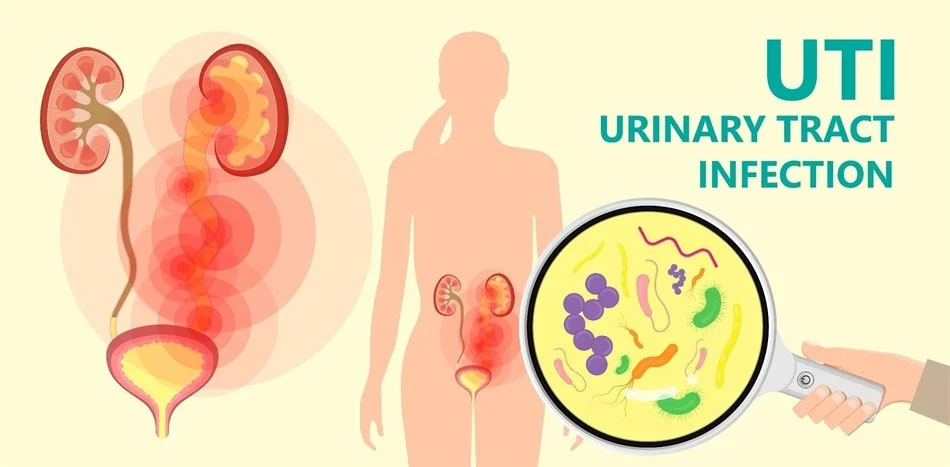Urinary Tract Infection
Overview: A Urinary Tract Infection (UTI) is a bacterial infection that affects any part of the urinary system, including the kidneys, bladder, ureters, and urethra. UTIs are more common in women but can affect individuals of any age or gender.
Overview: A Urinary Tract Infection (UTI) is a bacterial infection that affects any part of the urinary system, including the kidneys, bladder, ureters, and urethra. UTIs are more common in women but can affect individuals of any age or gender.
Causes: The majority of UTIs are caused by bacteria, typically Escherichia coli (E. coli), which normally resides in the digestive tract. The bacteria can enter the urinary tract through the urethra, leading to infection. Other bacteria such as Klebsiella, Proteus, or Staphylococcus may also be responsible for UTIs.
Risk Factors: Several factors increase the risk of developing UTIs:
- Gender: Women are more prone to UTIs due to their shorter urethra, making it easier for bacteria to enter the urinary tract.
- Age: Elderly individuals and infants are at an increased risk.
- Urinary Tract Abnormalities: Conditions like kidney stones or an enlarged prostate can obstruct urine flow, increasing the risk of infection.
- Sexual Activity: Sexual intercourse can introduce bacteria into the urethra.
- Catheter Use: Individuals with urinary catheters have an elevated risk of UTIs.
- Weakened Immune System: Conditions such as diabetes or HIV/AIDS can compromise the immune system.
Symptoms of UTI: Symptoms may vary depending on the part of the urinary tract affected, but common signs include:
- Pain or Burning Sensation: During urination.
- Increased Frequency: Urge to urinate more frequently than usual.
- Urgency: Sudden, intense need to urinate.
- Lower Abdominal Pain: Discomfort or cramping in the lower abdomen.
- Cloudy or Strong-Smelling Urine: Changes in urine appearance or odor.
- Hematuria: Presence of blood in the urine.
- Fever and Fatigue: In more severe cases, systemic symptoms may occur.
Diagnosis: A healthcare professional may diagnose a UTI through a combination of symptoms, a physical examination, and laboratory tests such as a urinalysis or urine culture to identify the specific bacteria causing the infection.
Treatment: Treatment typically involves a course of antibiotics prescribed by a healthcare professional. It's crucial to complete the entire course of antibiotics, even if symptoms improve before completion. Drinking plenty of fluids and avoiding irritants like caffeine and alcohol can also help alleviate symptoms.
Prevention: To reduce the risk of UTIs:
- Stay Hydrated: Drink plenty of water.
- Practice Good Hygiene: Wipe from front to back after using the toilet.
- Urinate After Intercourse: This can help flush out bacteria.
- Avoid Irritants: Limit the use of irritating feminine products and avoid bubble baths.

